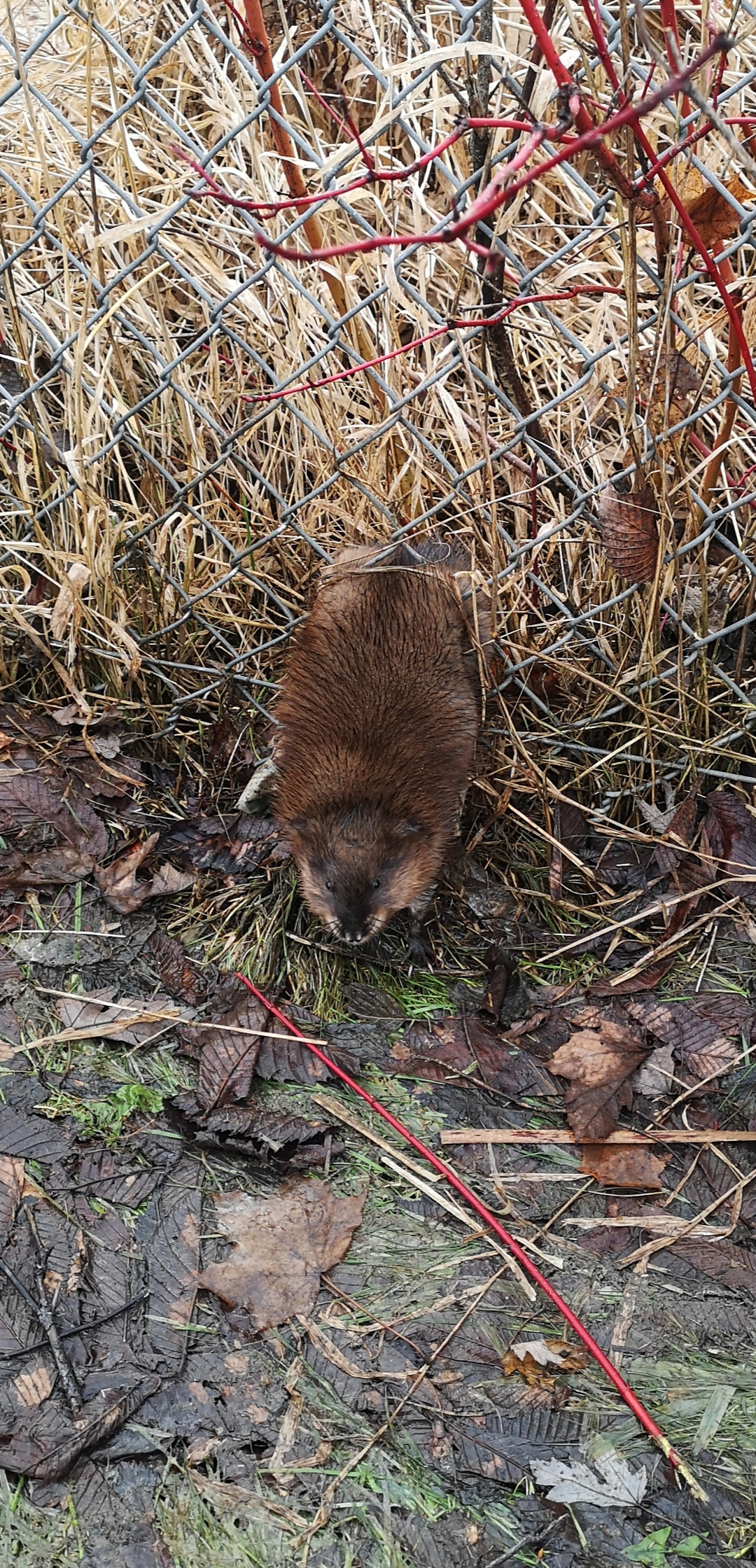Good news story: Muskrat rescue
by Ontario SPCA and Humane Society | Interesting | May 16, 2019

We love hearing good news stories from our communities! Normally we share success stories about our pets, but this wildlife story was just too good not to share!
Last week, two animal control officers were called into action when a pedestrian reported an animal in distress in Orangeville.
A woman was walking her dog when he started pulling on his leash and barking. It was then that the woman notice an animal trapped in the fence at the local baseball diamond. She wasn’t sure what kind of animal it was; maybe a huge rat or a beaver? In any case, she resolved she should call the Ontario SPCA and Humane Society and find out what she could do to help the poor creature.
Two animal control officers, for the Town of Orangeville, were sent to the location and identified the animal as a muskrat. A muskrat’s tail is slender, flattened vertically and up to about 25 cm long. It is covered with a scaly, protective skin.
“Generally, they look like oversized rats,” says animal control officer Chris Taylor. “They have similar facial features, but their tails are different.”
After the officers assessed the situation, they attempted to wiggle the muskrat free from the fence. The little guy was indeed stuck, so the officers cut the fence in a few places to free him.
Upon closer examination, they could see there was no physical harm to the muskrat, so they released him, and he went on his way.
Before heading off, Mr. Muskrat needed to recover from the shock of the rescue and paused to catch his breath. His energy seemed to return and, with one final glance back at the officers, the muskrat ran off.
“The muskrat was alert and he had energy, so I don’t think he was stuck there for very long,” concludes Taylor.
If you find yourself in a similar situation, don’t try to rescue the animal yourself, advises Jennifer Yapa, Manager of the Ontario SPCA Orangeville and District Animal Centre.
“Don’t try to handle wildlife on your own,” she says. “Animal control officers have special training and wear protective equipment to deal with these types of rescues.”
If you see a wild animal in distress, call your local animal control services, a licensed wildlife rehabilitation facility or the Ministry of Natural Resources and Forestry for guidance on how to proceed.
Categories
Testimonial
Your dedication and support
It is with and because of your dedication and support that helpless animals are being saved. Thank you for everything.
